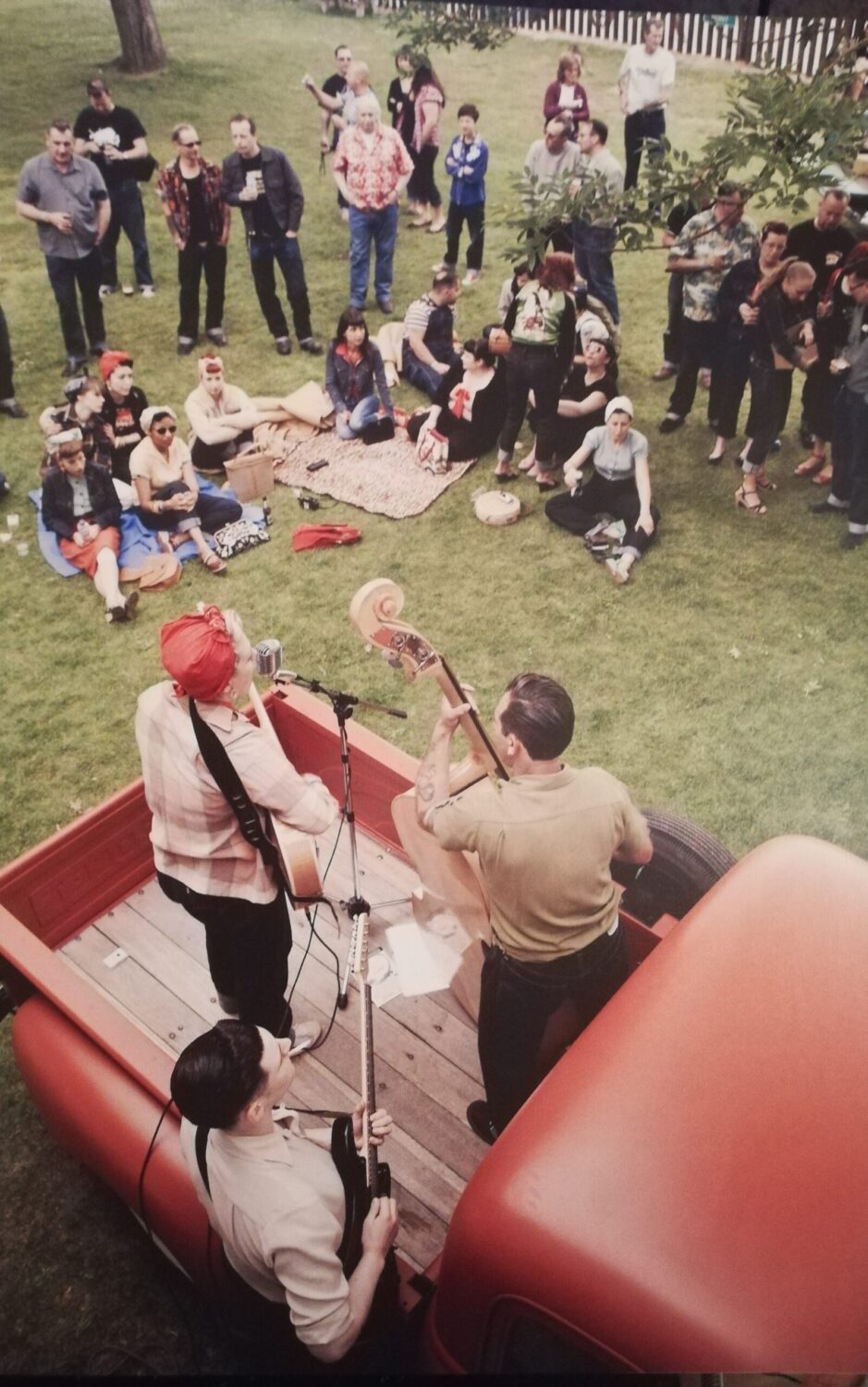
Rockabilly is a subculture with roots in the 1950s, taking its name from a genre of music that predates rock’n’roll and combined rhythm and blues with country music, characterised by using a stand-up bass. While the music is the backbone of the subculture, a complementary fashion and lifestyle have developed and it is now referred to by those on the scene as a way of life. In the 1970s the ‘Rockabilly Revival’ brought mainstream attention to the subculture and created new material to add to the subcultural canon. This dissertation follows the history of the subculture, specifically in Britain, from its inception to its contemporary form, analysing the changes that have affected the scene and how it is viewed. I use my experience as a participant-observer to add insight into British Rockabilly, viewing it as a continuous subculture that adjusts throughout time rather than a scene that happened quickly in the 1950s and revived then died in the 1970s. With multiple annual weekenders that cater specifically to this lifestyle, Rockabillies are still around, and the scene is ever-growing with a new, young audience discovering it continually. Rockabilly is often represented as an overwhelmingly white male working-class group. This dissertation also discusses the political issues that arise from this representation, including performative gender roles for women, and the debate surrounding use of confederate flag iconography which may be leading to outsiders viewing the subculture as white supremacist.

Andrew Shaylor. Rockabilly Rave, Camber Sands, East Sussex. Rockin’, The Rockabilly Scene, 2011.